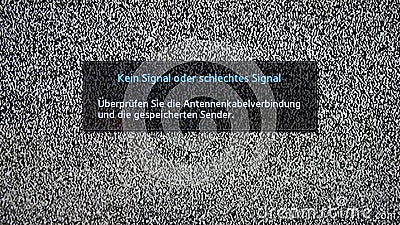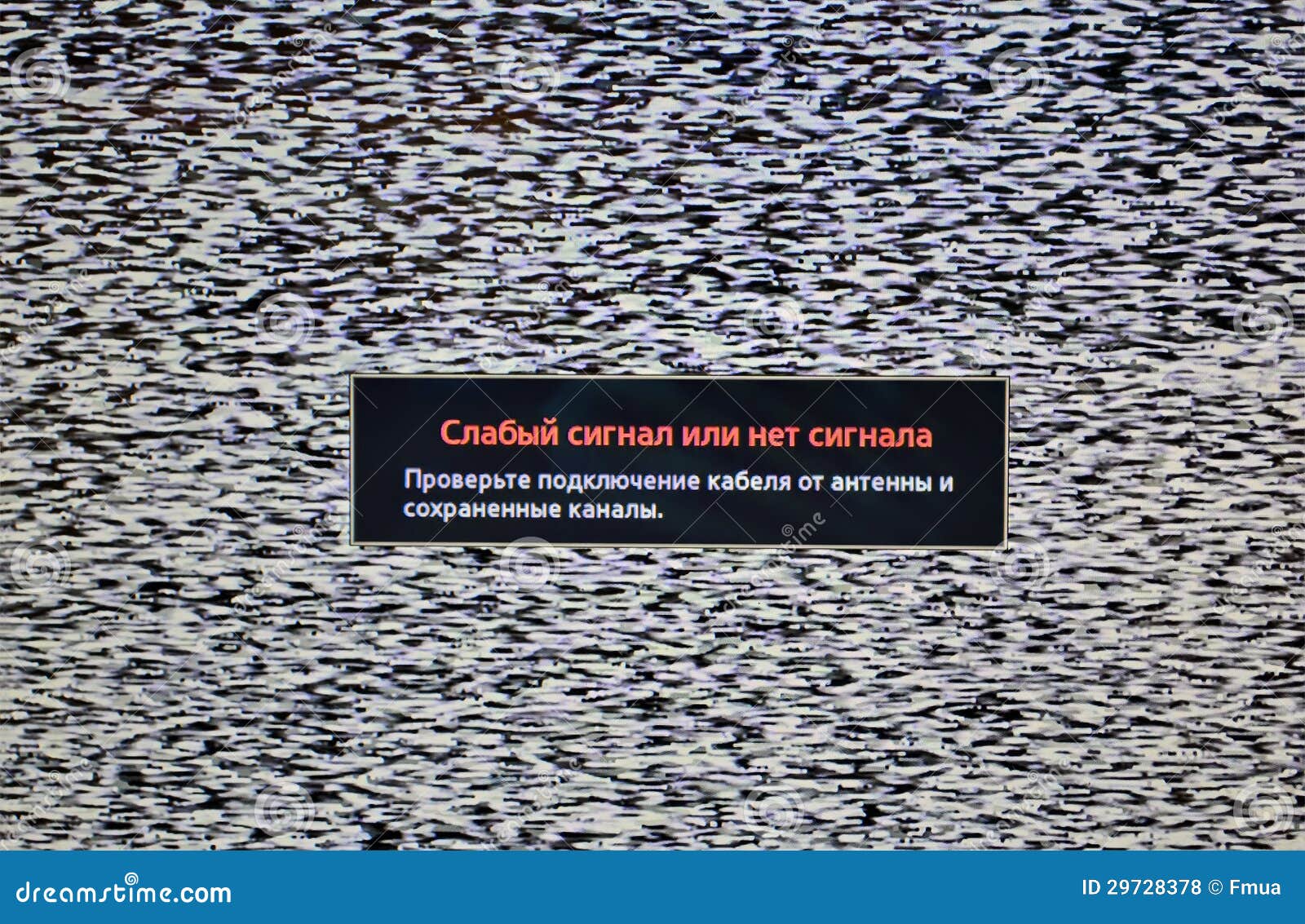

- Weak or no signal on tv update#
- Weak or no signal on tv manual#
- Weak or no signal on tv code#
- Weak or no signal on tv tv#
Oops typo I meant Channel 25, Frequency is 506000 khz and Bandwidth is 8. Enter the first number then save the channels it finds then repeat for the next and so on for however many are listed (except for the two with HD in the title).

You should have no need to change the other settings as they should change automatically as you change the Channel Number.
Weak or no signal on tv tv#
Your TV can't receive the HD muxes so no point trying the BBC B HD or COM 7 HD (if listed) sections.
Weak or no signal on tv code#
So basically using your post code in the checker enter as the Channel Number the number under N for each of the BBC A, D3&4, SDN, ARQ A and ARQ B sections. You say that when you first go into it it has 5 as the channel number, does it also show 177500 kHz or 177.5 MHz as the frequency and 7Mhz as Bandwidth? If so then you only need bother with the Channel Numbers.
Weak or no signal on tv manual#
OK.In the menu Manual Store - Digital Channel you should only need to set the Channel number the TV should sort out the Frequency and bandwidth itself.
Weak or no signal on tv update#
I even tried updating the TV using a USB stick but the update was from 2010 and it did nothing. Manual Tune then Manual Box has Channel 5, Frequency and Bandwidth.ĭo I then enter 23 from the Final Prediction into the Channel box and from the letter N enter 23 into the Frequency box? Not all transmitters have COM 7 HD so the list for your postcode may not show it, but it will show BBC B HD. In that list there are two groups of columns one headed BBC B HD and the other COM 7 HD Both of those need to be set to DVB-T2 all the others to DVB-T The other setting you may need to change is the DVB-T or DVB-T2 mode (if it has such a setting). (which could be 3, 6, 7 or 8 times depending on transmitter) You will obviously have to repeat this for as many muxes as are listed. You need the Final Prediction row and the grey columns headed by the letter N.Įnter those numbers as the UHF Channel number in the TV. If you scroll down to the Coverage Prediction section there are a number of rows and columns. Just to make sure we are all singing from the same hymn sheet Lets start from first principles by using the Post Code checker on the DigitalUK website with Detailed View ticked. The only thing you need enter is the UHF Channel number The TV should be able to work that out for itself. If I go to Manual Store->Digital Channel.the Manual Store box comes up, what do I enter for Channel 25, there are also Frequency and Bandwidth boxes to fill in. I'm really confused as to what I'm supposed to do or where to enter the info on the TV at You will need to delete all channels first and then feed those numbers into the manual tuning section of the TV and that should do the job. You can get this by going to and putting your post code into the checker on the right of the page, tick Detailed View and that will lead to a page showing the most likely transmitter.Ī table lower down that page shows the various muxes with the UHF channel numbers you need in the grey columns under N. Which requires knowing the UHF channel numbers of the various multiplexes on your local transmitter. If that is the problem you need to manually tune the TV. Then it sees the stronger transmitter and puts it's channels up in the 800+ range.

If there are and these work OK then the TV is seeing two transmitters and tuning into the weaker one first and allocating those to the normal channel numbers. One thing that you can check easily is if there are duplicate channels up in the 800s. However if no device connected to the system works properly on any aerial point then that points to the aerial system. This is where having a second TV or a PVR can come in handy because if another device works fine on all the aerial points and with any leads you have then that points the finger at the TV. So if you have a different lead try that. If you used the same lead in both locations that would give the same result if it was faulty. Trouble is with only one device to try it can be a bit harder to diagnose the exact cause.įor example if you have wall plates in the various rooms for the aerial connection it could be the lead you use between wall plate and TV. The most common cause of reception issues is the aerial system. Do you have any other TV receiving device (another TV or a PVR) to compare your TV to?


 0 kommentar(er)
0 kommentar(er)
